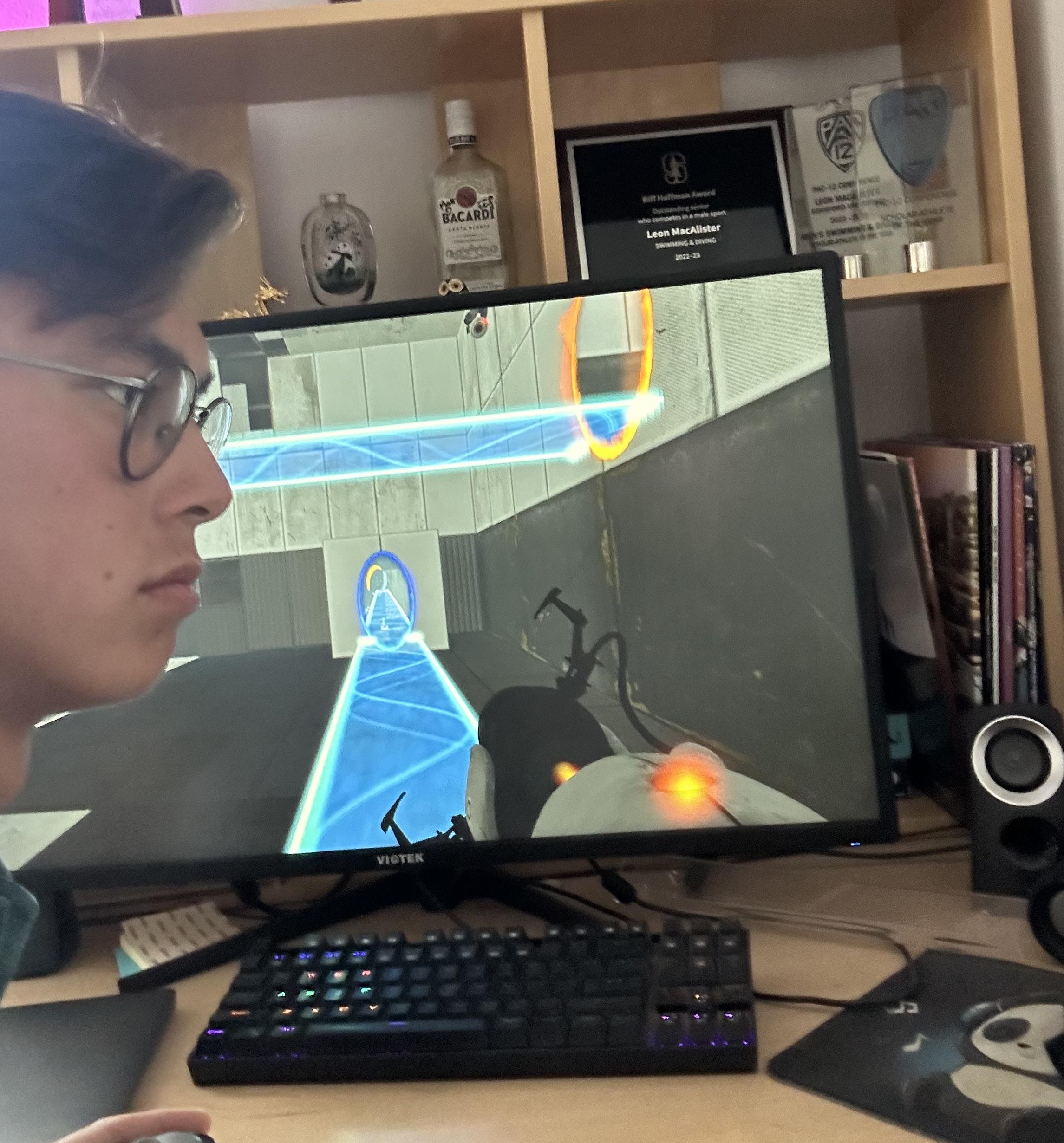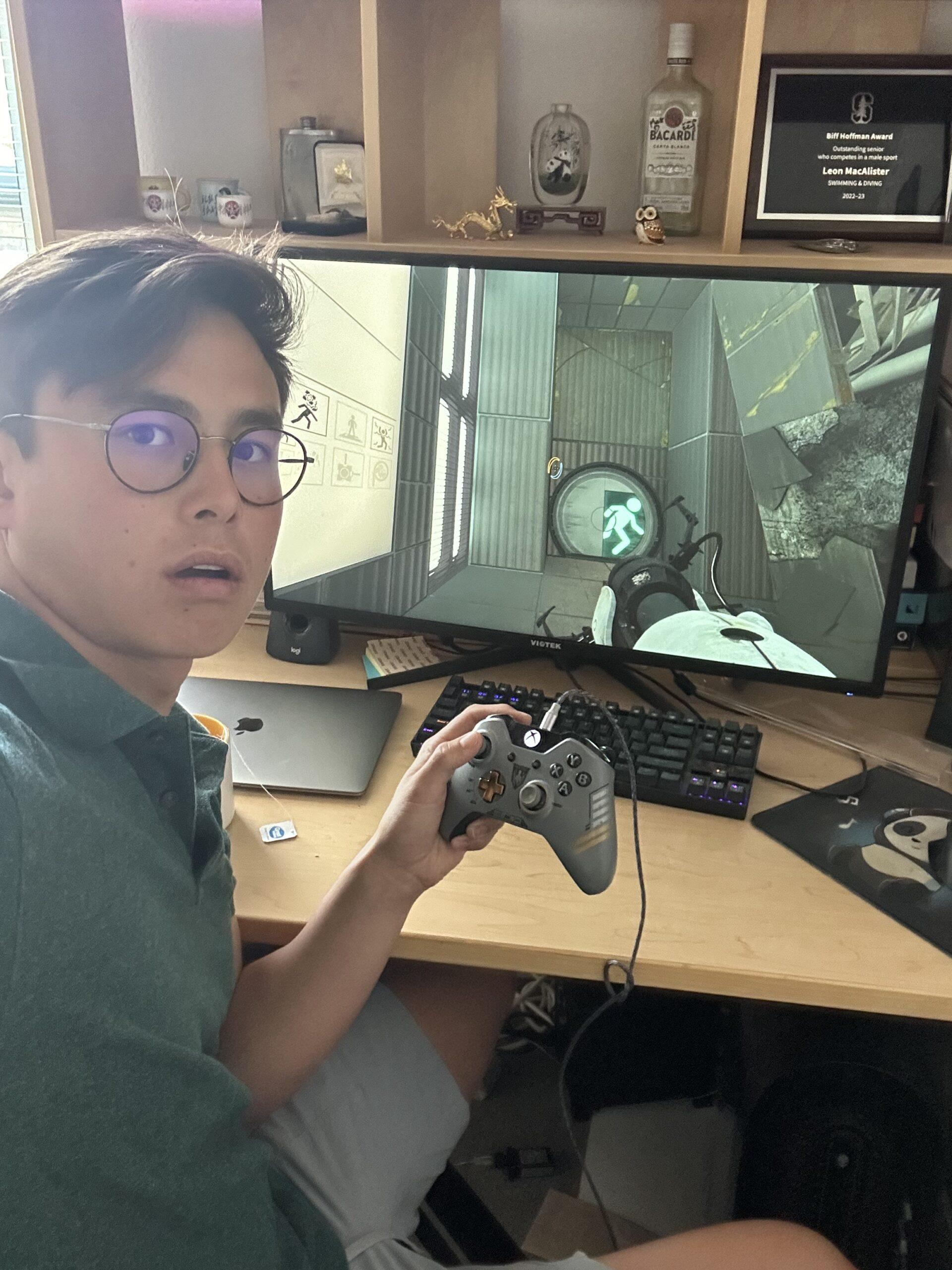Portal 2 was developed by Valve and released on console and PC in 2011 and is recognized (rightfully so) as one of the most iconic games ever made. The game is a source of entertainment for anyone that is looking for both a cerebral, absurd and absolutely hilarious puzzle-solving experience (above the age of 12). Indeed, Portal is a genre redefining, engrossing the player in a dystopian world of morally dubious testing on human subjects, companion cubes, death lasers, depressed lethal turrets and ‘goop’ physics. Just so, with each chapter of the game, the player is exposed to increasingly mind bending puzzles, each increment adding another layer of complexity and fun. I believe that fundamentally, the puzzle mechanics in this game are truly novel and extremely rewarding. This paired with incredible story telling truly made this game an incredible experience for my friend and I to play through.
Portal’s puzzle mechanics had a profound impact upon the experience of the game as it totally engrossed us in the experience, which in turn enhanced its profound emotional impact upon us as players. The game revolves around the use of the portal gun, which allows players to shoot two interconnected portals on white flat surfaces. This tool is employed in both straightforward and complex ways, facilitating the transportation of players and skillfully challenging them with spatial and physics-based problems. The mind-bending puzzles all require the manipulation of the environment to progress such as redirecting lasers, using light bridges, or applying gels that change physical properties.
(me encountering light bridges for the first time)
Indeed, each level is designed as a sequence puzzle, starting with simple tasks and gradually adding complexity, which taught us the mechanics naturally without overt instruction. Within each test chamber, we were faced with logic puzzles that required us to deduce the correct use of portals and environmental tools to proceed, and sequence puzzles that demand actions be performed in a specific order to avoid failure. Furthermore the inclusion of timing puzzles, where we had to execute actions within precise windows (often mid-air with fucking cool synthwave music), added to the complexity and thrill of the game. Such varied puzzle types not only amplified the thematic depth of the game but also fulfilled the criteria for good puzzle design by being both challenging and fair.
Moreover crucial puzzle-solving information is embedded within the environment and dialogues, which prompted us to engage deeply with both the narrative and gameplay concurrently. For example the AI characters, such as GLaDOS and Wheatley, played crucial roles in the puzzle mechanics, providing guidance, humor, and narrative depth, which was integral to the game’s engaging puzzle-solving experience. On top of guidance our interactions with them added a personal dimension to each challenge, making the act of solving puzzles feel like a direct advancement of the story. This integration ensured that we were not just solving puzzles; but unraveling and influencing the narrative which added much motivation for my friend and I.
(my finger pointing at interesting easter egg)
Our overall emotional investment was further deepened by the highs and lows experienced through the puzzles. Moments of frustration were perfectly balanced with elation of discovering a solution, effectively mimicking an emotional rollercoaster that kept us engaged and connected to the world of Aperture Science. Additionally, it honestly felt like our actions had a tangible impact on the environment and the narrative, enhancing the sense of agency and responsibility for the unfolding events. For example as the game approaches its climax, the puzzles serve a dual purpose: they are obstacles as well as the keys to gaining freedom. Solving these final puzzles in the old Cave Johsnon test chambers honestly enhanced the denouement, as it felt like an actual achievement as opposed to just watching the end of a movie. As a result, the turret orchestra at the end was especially emotional (me and my mate had tears in our eyes hahah). The satisfaction derived from overcoming these challenges merged with the emotional payoff of the narrative created an incredibly memorable experience that highlights the power of well-integrated puzzle design.
To conclude, my affection for Portal 2 can’t be overstated; Portal seamlessly blends intelligent puzzle mechanics with a captivating narrative, making every moment of gameplay challenging but deeply rewarding. The mixed aspects of humor, story, and innovative puzzle design has created a novel and immersive experience that left a lasting impression on me and my friend. Whether you’re a veteran gamer or new to the world of video games, Portal 2 is sure to provide an unforgettable experience that’s as enriching as it is fun.
(me playing Portal 2)





